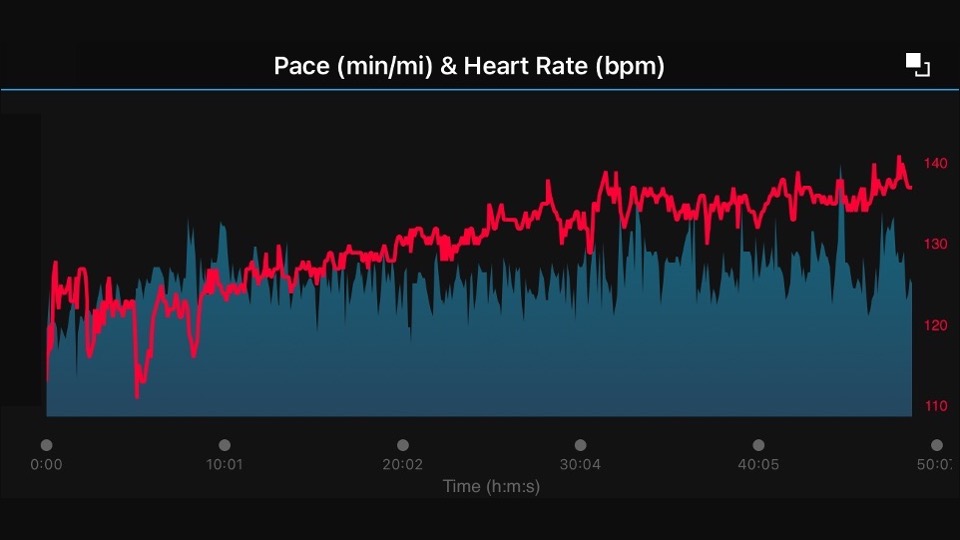I was looking at some data from one of my runs last week and it showed a classic case of Cardiovascular Drift. What exactly is this phenomenon?
Cardiovascular Drift is a normal response that occurs when we do a long, steady state, aerobic workout (e.g. an easy paced long run). During this kind of aerobic workout, it is perfectly normal for our heart rate to “drift” higher over the course of the workout. The data from my 50-minute run shows the effect very well.
In the graph above you, my run pace in shown in blue, and my heart rate in red. After a brief warm up, you can see that my run pace was essentially the same for the remainder of the run. In contrast however, you can see that my heart rate gradually increases, at a steady rate, from the low 120’s bpm up to 140 bpm. That is Cardiovascular Drift… my heart rate increased even though my pace (and effort) didn’t.
The literature indicates that the main causes of Cardiovascular Drift are reduced heart stroke volume (due to sweat reducing the volume of your blood) and increased core body temperature. To counteract both of these effects, your body responds by making your heart pump faster. You can find a lot of details on these reasons on the internet, if you want to go into this in greater depth.
Staying fully hydrated during exercise, is one way to minimize cardiac drift. I did not do a good job of this in my run above. That run was done indoors, on a treadmill without the use of a fan, and I didn’t take in any fluids during the run.
Finally, for long course triathletes, Cardiovascular Drift on very long runs, becomes a good indicator of overall aerobic fitness and readiness to race well. Very fit athletes can run a long way and still have minimal drift (<5%).



